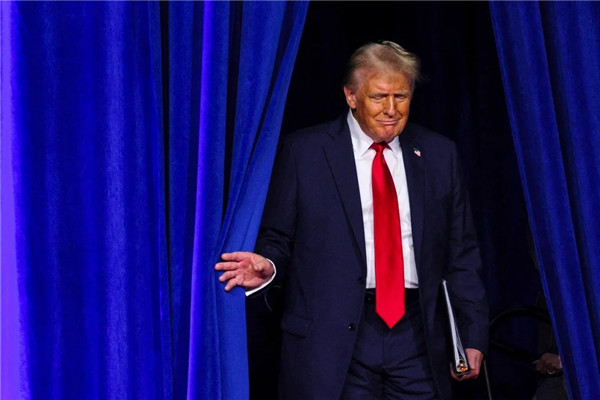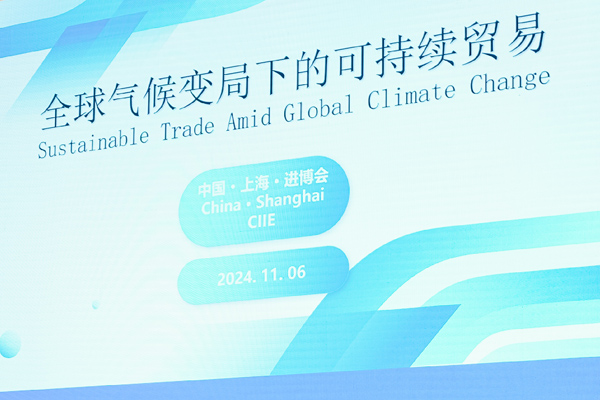CCG releases new report Understanding the US-China Trade War: Analysis and CCG Recommendations
May 13 , 2019
Sino-US relations have been overshadowed by trade tensions since the second half of 2017. July 6 saw an escalation of the situation as the US imposed tariffs on $34 billion worth of Chinese goods. On July 10, the dispute was further ratcheted up a notch as the Trump administration announced that it would impose additional tariffs on a further $200 billion worth of Chinese goods.
At this crucial moment with both sides in deadlock, on July 24, the Center for China & Globalization (CCG) released the report “Understanding the US-China trade War: Analysis and CCG Recommendations.”
Based on CCG’s long-term ongoing research and investigations through visits to the US, the report presents an in-depth, systematic appraisal of Sino-US economic relations. It draws on solid empirical research and data to dispel misunderstandings surrounding the current dispute and puts forward recommendations to resolve current tensions and promote the healthy development of Sino-US relations.

At the launch event, CCG President Wang Huiyao presented key findings and recommendations of the report. The document presents a comprehensive analysis of the underlying causes of the trade imbalance, the impact of intensifying frictions on China and the US, and explores the potential for both sides to overcome their differences through new forms of cooperation.
The report analyses various aspects of the dispute, including structural issues caused by rapid economic globalization and development; how conventional measures lead to a misreading of the Sino-US trade imbalance; how political and economic changes in the domestic and international environment have contributed to the dispute; the divergent attitudes towards the trade war in Washington; and negative impacts on multinational companies.
Based on these findings, the report puts forward ten recommendations to deal with the dispute. These cover various levels including structural factors, methods for measuring trade, bilateral service trade, multinationals, provincial/state government cooperation, multilateral mechanisms, US export restrictions, the BIT, global governance cooperation, and Track II diplomacy.
China and the US are the world’s largest economies and positive relations between these two countries are key to global stability, development, and prosperity. Therefore, it is important to view the current dispute through an objective lens.
The report illustrates how the current Sino-US trade imbalance is caused by deep underlying structural factors and is significantly overestimated by conventional measurements. Based on the realities of the global economic system, the report argues that US efforts to redress the imbalance via unilaterally imposing tariffs against China are not sensible.
The Chinese and US economies are deeply intertwined so using traditional metrics leads to a severe miscalculation of the true bilateral economic relationship. There are many voices in both houses of Congress against the trade war, as well as an uptick in US domestic opposition and widespread international disapproval for the US protectionist stance. This increases the likelihood of reopening dialogue.
Based on solid economic analysis, the report lays out key factors that have shaped the current trade imbalance. First, the bilateral trade imbalance is an inevitable result of the US dollar’s status as the global reserve currency, as described by the “Triffin Dilemma.” Second, in line with macroeconomic principles, the US trade deficit has been enlarged by a decline of the US household savings rate and rapid increase of the US national debt. Third, the configuration of global value chains and cross-border division of labor has shaped the current imbalance. Furthermore, US export restrictions have further exacerbated the trade deficit.
The report then moves on to show how the trade imbalance is vastly misjudged by conventional measurements. China and the US are deeply intertwined through global value chains, arrangements that are not captured by simple trade figures. Under this system, while China has a trade surplus, in fact, much of the profit accrues to the US. In addition, the report highlights that China is the second largest importer of US services, with the US enjoying a trade surplus of USD 53 billion with China in 2017 (USD 54.7 billion according to Chinese statistics). However, this significant sum is overlooked by the US.
In terms of how to understand the Trump administration’s motives for launching the trade war, the report looks at several dimensions including changes in US domestic politics, structural shifts in the Sino-US economic relationship, and the new cooperative-competitive nature of major power relations. The CCG research team judge that changes in the US domestic political landscape are the major driving force for the current trade frictions, while structural shifts in the Sino-US economic relationship have served as a direct impetus.
Regarding the impact to both sides of the trade dispute, the report points out that according to economic theory, the trade war can be likened to a “prisoner’s dilemma” and is in neither country’s long-term interests. Not only will it impact China’s growth and reform process, but it will also reduce the growth and employment benefits that the US derives from the bilateral relationship, also harming innovation through increasing costs and loss of talent. The report also highlights the detrimental effect the trade war will have on global growth and multilateralism.
In the report, CCG points out that in the US there are diverse views towards the trade war. Politicians on the hill are making their opposition heard and on July 11, the US Senate passed restrictions on Trump’s tariff powers by an overwhelming majority of 88 to 11 in a rare show of bipartisan agreement. There is also speculation as to whether there is a consensus within Trump’s team itself. In addition, there is rising opposition from US economists, retailers, trade associations, business groups, and workers. A significant number of states home to agricultural interests or concentrations of multinational companies are also opposed to Trump’s trade policies.
Based on these conclusions, the report argues that it is possible to find solutions to defuse the trade war and puts forward the following series of recommendations.
1. Both China and the US are facing a series of structural challenges. Both countries need to accelerate the restructuring of their own economies, building on the foundation of domestic reforms to bring about a joint improvement in the trade imbalance.
2. The way that Sino-US trade is measured should be reformed and updated, discarding current outdated traditional methods. In particular, the new accounting method should take into account global value chains and include aspects such as trade in services and earnings from US investments in China. This will more accurately and fairly quantify the value of the trade relationship for both countries.
3. There is considerable room to increase bilateral trade in services. The large US trade surplus in services will help to balance the overall trade relationship, including tourism, education, exchange of talent, investment migration, patent earnings, infrastructure construction, and e-commerce.
4. All parties should work to restore and strengthen the role of economic ties as a ballast in the bilateral relationship. US companies make considerable earnings of total USD 200-300 billion each year in China. US multinationals, trade associations, think tanks and lobby groups can exert influence in the US, help overcome the current deadlock, and bring about a return to the track of dialogue and negotiations.
5. Strengthen Sino-US cooperation at the state/municipal level in fields such as infrastructure, emerging industries, climate change, and energy. Encourage local governments to deepen engagement and collaboration with states and municipalities in the US, including via annual Sino-US summits at both the gubernatorial and mayoral level. In addition, create new platforms for cooperation at the local level and province-to-state cooperation for infrastructure funding.
6. Appeals and consultation should be carried out under the WTO framework. China could file appeals against the US and undertake negotiations under the WTO, providing a space for productive discussion.
7. The US could relax export restrictions, in particular concerning high-tech exports to China. This would be mutually beneficial, helping to reduce the negative impacts of such export restrictions and reduce the trade deficit.
8. Revive talks towards the Bilateral Investment Treaty (BIT) or explore a new Sino-US Free Trade Agreement (FTA) to reduce barriers to investment on both sides and further open up markets. The BIT can serve as an important foundation to ensure stable future economic relations between China and the US.
9. Promote free trade via facilitating regional multilateral institutions and mechanisms for the Asia-Pacific region and accelerating the formation of a regional free trade system. In the future, China could consider joining the new Trans-Pacific Partnership (TPP).
10. Both sides should work to strengthen the role of Track II diplomacy in facilitating bilateral exchange. Supporting exchanges among think tanks and nonprofit organizations across the Pacific will create effective bridges for dialogue, help to dispel miscommunication, and generate positive plans to resolve differences.
In the decade since it was founded, CCG has continuously worked towards the healthy development of Sino-US ties and sought to actively play its role as a think tank in Track II diplomacy. Recently, CCG delegations have made two trips to the US, engaging with high profile think tanks such as The Heritage Foundation, the Hudson Institute, Council on Foreign Relations, and the American Enterprise Institute. CCG has also engaged with members of Congress and the US-China Business Council, as well as inviting top US think tanks and business leaders to China for joint activities. CCG has also had dialogue and exchange with influential groups such as the American Chamber of Commerce in China and large multinationals. This ongoing dialogue and engagement, along with CCG’s long-term research, have fed into the analysis and recommendations presented in this report.
Since the election of President Trump, CCG has paid particular attention to the Sino-US relationship. In addition to hosting timely seminar discussions and engaging in Track II diplomacy, CCG has published a series of relevant reports on Sino-US relations and de-globalization, such as Trump’s Coming era: Challenges, Opportunities and Policy Responses; Infrastructure Cooperation – new opportunities for Sino-US relations; Seize the timing of tightening US restrictions on immigration, adopt more open policies to attract international talent; and 12 suggestions for building stable, balanced, win-win Sino-US relations based on key findings of CCG’s US field trip. CCG is also part of China’s recently formed Think Tank Alliance on US Issues.
About CCG
The Center for China and Globalization (CCG) is a leading independent think tank focused on globalization and related public policy issues. Based in Beijing, CCG is dedicated to providing insights and policy solutions to decisionmakers and supporting informed debate on the key issues of our times.
CCG’s research agenda focuses on China’s growing role in the world and covers all aspects of globalization. This includes global and regional governance, foreign policy, international migration, cross-border trade and investment, and the internationalization of Chinese companies.
Founded in 2008 by Dr. Wang Huiyao and Dr. Miao Lu, CCG has now grown to house over 100 researchers and staff with additional branches in Hong Kong, Shanghai, Guangzhou, Shenzhen, and Qingdao.
CCG was recognized as China’s leading independent think-tank by the University of Pennsylvania’s 2017 Go To Think Tank Index. This also marked the first time an independent Chinese think tank was ranked among the world’s top 100 think tanks.






